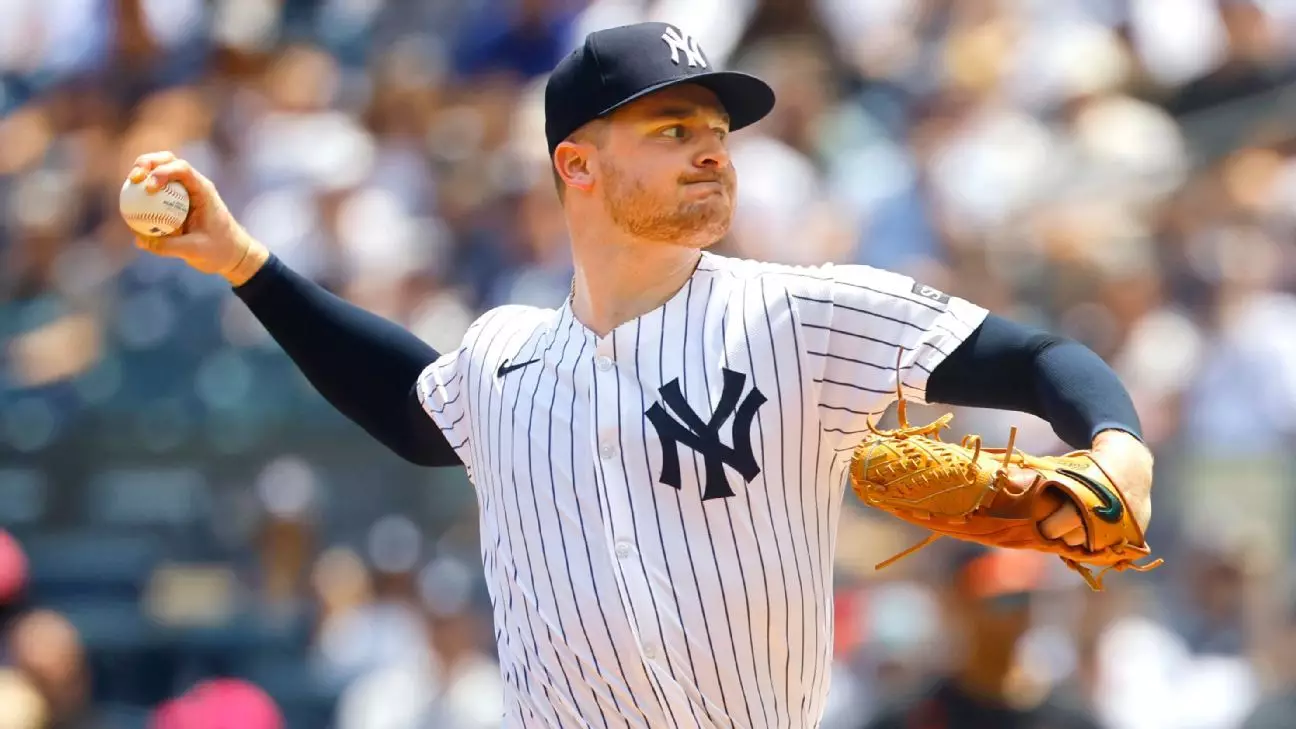The news of Clarke Schmidt’s impending Tommy John surgery underscores a harsh reality facing the New York Yankees: their starting rotation has become a revolving door of injuries and setbacks. What was once a promising season marred by optimism now feels like another chapter in a long, frustrating saga of misfortune. The impact of losing Schmidt—who had shown flashes of brilliance—extends far beyond a single player’s absence. It signifies a fundamental fragility within a pitching staff that was supposed to be fortified, not fractured, by offseason acquisitions and prospects. As baseball analysts often remind us, a rotation’s stability is its backbone; without it, even the most talented teams can spiral into mediocrity or worse.
Schmidt’s injury, while disappointing, is emblematic of the systemic issue that teams neglect at their peril—over-reliance on young pitchers with limited MLB experience, coupled with an underestimation of how physically demanding the game truly is. His MRI confirmed a torn ulnar collateral ligament, a diagnosis as grim as it is predictable given the repeated soreness and warning signs. The fact that this marks his second Tommy John surgery is particularly troubling, illustrating the wear and tear even promising arms are subjected to in pursuit of big-league success. The Yankees’ failure to shield their talented pitcher from overuse, especially after he had demonstrated resilience by dominating in his last few outings, exposes a fundamental oversight: overconfidence in health and durability.
The Human Cost and Leadership Voice
This injury isn’t just a statistic—it’s a personal blow to Schmidt’s career and a emotional blow for the Yankees franchise. The pitcher’s own recognition of dealing with elbow soreness since early June reveals a dangerous tendency in baseball administration: dismissing early warning signs. Boone’s comments about low concern until Thursday’s discomfort highlight a managerial mindset that sometimes minimizes injury risks in favor of maintaining a winning facade. This short-term thinking, rooted in the desire for immediate results, can ultimately erode long-term team health and competitiveness.
The Yankees’ leadership, from Boone to the front office, faces a critical test in how they handle this mounting adversity. Relying on internal options such as Carlos Carrasco and Allan Winans may offer temporary relief, but they are not the game-changers Schmidt was starting to become. The promotion of prospects like Cam Schlittler signals the urgent need for development rather than instant solutions. Yet, without strategic reinforcements via trade, the Yankees risk digging a deeper hole. Their internal depth is simply insufficient for the mounting injury crisis—each setback amplifies their need to act decisively before the trade deadline.
The Broader Implications: A Question of Strategy and Resilience
The Yankees’ predicament is more than just a series of unfortunate events. It exposes a broader issue within baseball’s approach to pitching – an overemphasis on talent over durability. Teams often prioritize high-ceiling arms, neglecting injury histories or physical resilience, leading to a cycle of rehab and reconstruction. When key players like Gerrit Cole undergo Tommy John surgery, and others like Luis Gil and Yarbrough remain sidelined, it demonstrates that even elite talent is vulnerable—and sometimes, the system is set up to fail.
Moreover, this situation raises questions about the Yankees’ strategic foresight. Their current rotation, with Max Fried, Carlos Rodon, Will Warren, and Marcus Stroman, might be temporarily serviceable, but it’s hardly resilient. The reliance on bouncing back from injuries and buffing up with mid-season acquisitions could be a gamble that backfires if reinforcements aren’t found. The team’s management must decide whether to double down on internal development or aggressively pursue trades that can change the trajectory of their season. Time is running out, and the stakes are high: injuries like Schmidt’s could thwart not just this season but also the franchise’s long-term aspirations if not addressed with courage and vision.
The Future in Question: How Much Can the Yankees Rebound?
This injury crisis challenges the Yankees’ identity—one built on pitching depth and resilience. The temptation to accept a patchwork rotation is strong, but history suggests it’s a short-sighted strategy. The team needs to accept that injuries are part of the sport’s brutal reality and prepare accordingly. The onus now falls on the front office’s willingness to be aggressive in the trade market, targeting arms that can plug immediate gaps and provide stability.
From a leadership perspective, Boone and the Yankees’ decision-makers must project confidence and clarity in their response. Whether by trade or creative internal options, they cannot afford complacency. Schmidt’s setback is a stark reminder that even the most promising talent can be lost if teams don’t prioritize long-term health, strategic planning, and injury prevention measures. As the season unfolds, the Yankees’ ability to adapt and reinforce their rotation will determine if they can overcome this harsh chapter or succumb to it entirely.


Leave a Reply